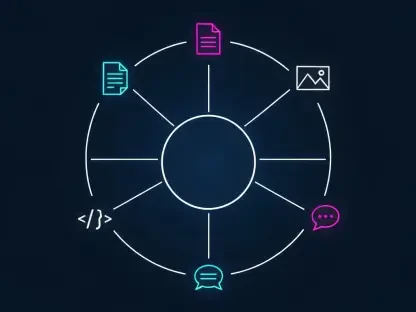Gone are the days when banks could simply offer checking and savings accounts, investment options, and loans. Now, it’s about providing an extensive banking experience that not only meets customer demands but also offers data protection and regulatory compliance. This evolution has required banks to transform massive amounts of unstructured data into actionable insights. This substantial shift has heightened the need for artificial intelligence (AI) in banking operations, driving a data-powered industry capable of addressing diverse challenges and optimizing workflows, compliance, and customer satisfaction.
1. Laying the Foundation for AI-Powered Workflows
Banks are eager to adopt more digital workflows, but they’re still gathering, processing, and securing large amounts of paper-based data. Document management systems and intelligent document processing platforms are ideal starting points for automating workflows and optimizing data use. When these systems are integrated and connect the front, middle, and back offices, banks can achieve operational efficiency company-wide. Cloud-based platforms can help improve customer service, lower costs, enhance document security, and facilitate better document sharing and decision-making.
Beyond just storage, effective document management systems enable exhaustive data analysis and uncovering patterns that otherwise remain invisible. This ensures a seamless transition from traditional workflows to AI-driven operations. Instituting AI and machine learning (ML) into these processes can lead to transformative innovations. Properly managed data is a vital asset for banks, laying the groundwork for advanced solutions that leverage AI for efficiency and insight. This integration enhances the bank’s ability to adapt to varying market dynamics while ensuring robust data protection compliance.
2. Elevating Customer Experiences with AI and Automation
Banking customers expect personalized, frictionless digital experiences. AI/ML-powered automation helps banks deliver these interactions by quickly processing customer data. AI offers an incredible opportunity to elevate customer service, aiding both virtual bots and human agents in personalizing customer interactions and optimizing self-service resolutions. According to industry reports, 80% of banks and credit unions leveraging AI are more likely to believe that their contact center is a meaningful contributor to their customer experience strategy.
The predictive capabilities of AI analyze customer behavior, preferences, and historical data to offer bespoke banking solutions. This extends beyond basic banking interactions to anticipating customer needs, thereby strengthening customer loyalty and trust. As personalized interactions become the standard, banks must continually innovate to stay competitive. Conversational AI can offer immediate responses and solutions, enhancing the overall efficiency of customer-service channels. This approach not only boosts customer satisfaction but also significantly reduces wait times and operational costs.
3. Enhancing Compliance Efficiency with AI
Businesses have leveraged a combination of generative AI and retrieval-augmented generation (RAG) to power domain-specific self-service knowledge discovery, enhancing decision efficacy by a significant margin. As compliance leaders continue shifting to agile, automated processes and cloud-based technologies, many are leveraging AI/ML solutions to enhance compliance practices in data accessibility, mapping, testing, and monitoring.
Through AI, banks transition from fragmented processes to automated workflows, improving compliance and audit readiness, and helping to significantly reduce compliance costs. AI-powered tools help manage ever-evolving regulatory requirements by automating routine compliance tasks and conducting in-depth analysis. This ensures continuous monitoring and swift adaptation to new regulations, thereby lowering risks. Moreover, the ability to swiftly aggregate and analyze compliance data speeds up the audit process, earmarking potential issues before they become liabilities, further bolstering the bank’s regulatory standing.
4. Steps for Driving Operational Growth with AI
Prioritizing clean and accessible data is crucial to building a solid foundation for AI initiatives in banking. Establishing clear compliance frameworks aligned with regulatory guidelines for AI use ensures ethical and legal adherence. Another critical step involves investing in flexible and scalable IT infrastructure to support evolving AI technologies. Training and developing a skilled workforce equipped with knowledge in AI and data science further enhances AI implementation.
Collaboration with technology partners fosters innovation, allowing banks to stay ahead in the competitive landscape. Ethical and safe AI policies build customer trust, which is essential for the successful integration of technology into financial services. Continuous review and refinement of strategies ensure that AI deployment adapts to changing requirements and remains effective. Embracing these steps positions banks to harness AI’s full potential, facilitating growth and delivering superior service.
AI in Banking: A New Era
Gone are the days when banks could simply offer basic services like checking and savings accounts, investment options, and loans. Today, banks must provide a comprehensive banking experience that not only meets the growing demands of customers but also ensures data protection and strict regulatory compliance. This evolution has led banks to overhaul their operations, converting vast amounts of unstructured data into actionable insights. As a result, the need for artificial intelligence (AI) in banking has significantly increased. AI technology now drives the data-powered banking industry, addressing a wide array of challenges and enhancing workflows, regulatory adherence, and overall customer satisfaction. This comprehensive transformation empowers banks to stay competitive in a rapidly evolving financial landscape while ensuring they meet their clients’ sophisticated needs and foster a secure, compliant, and customer-focused environment.









